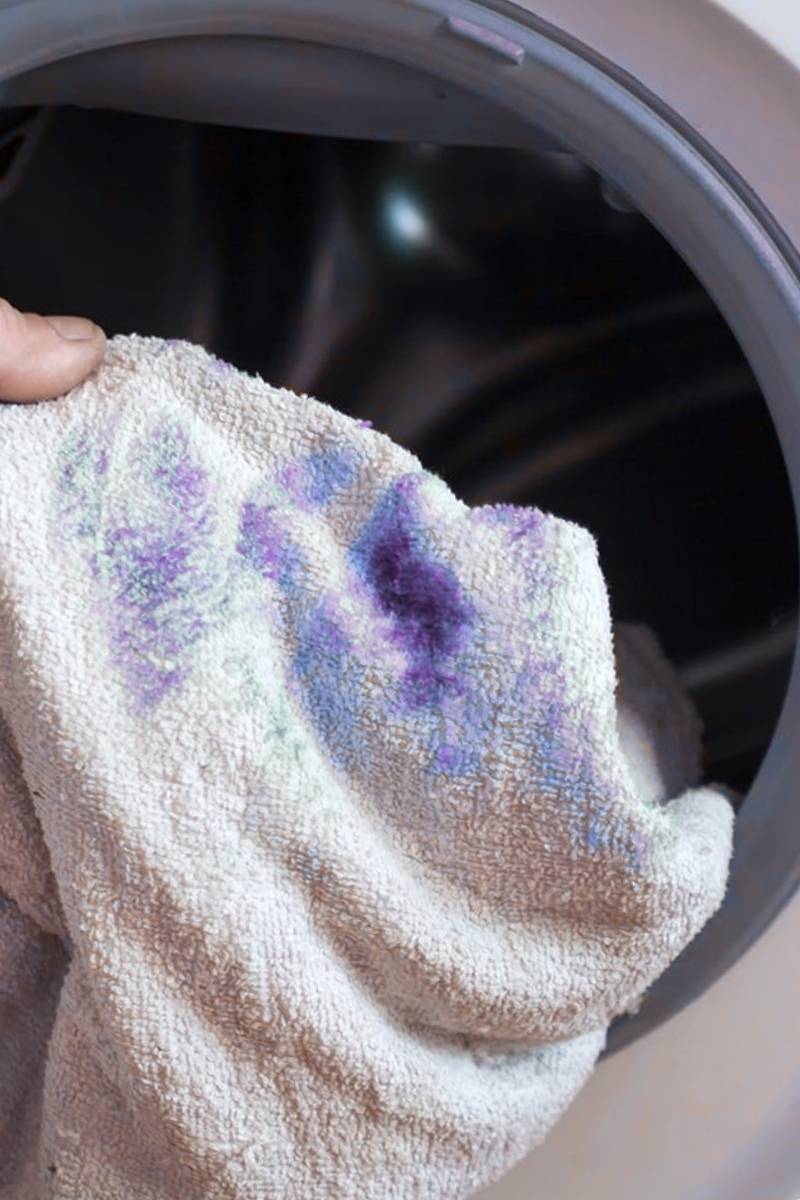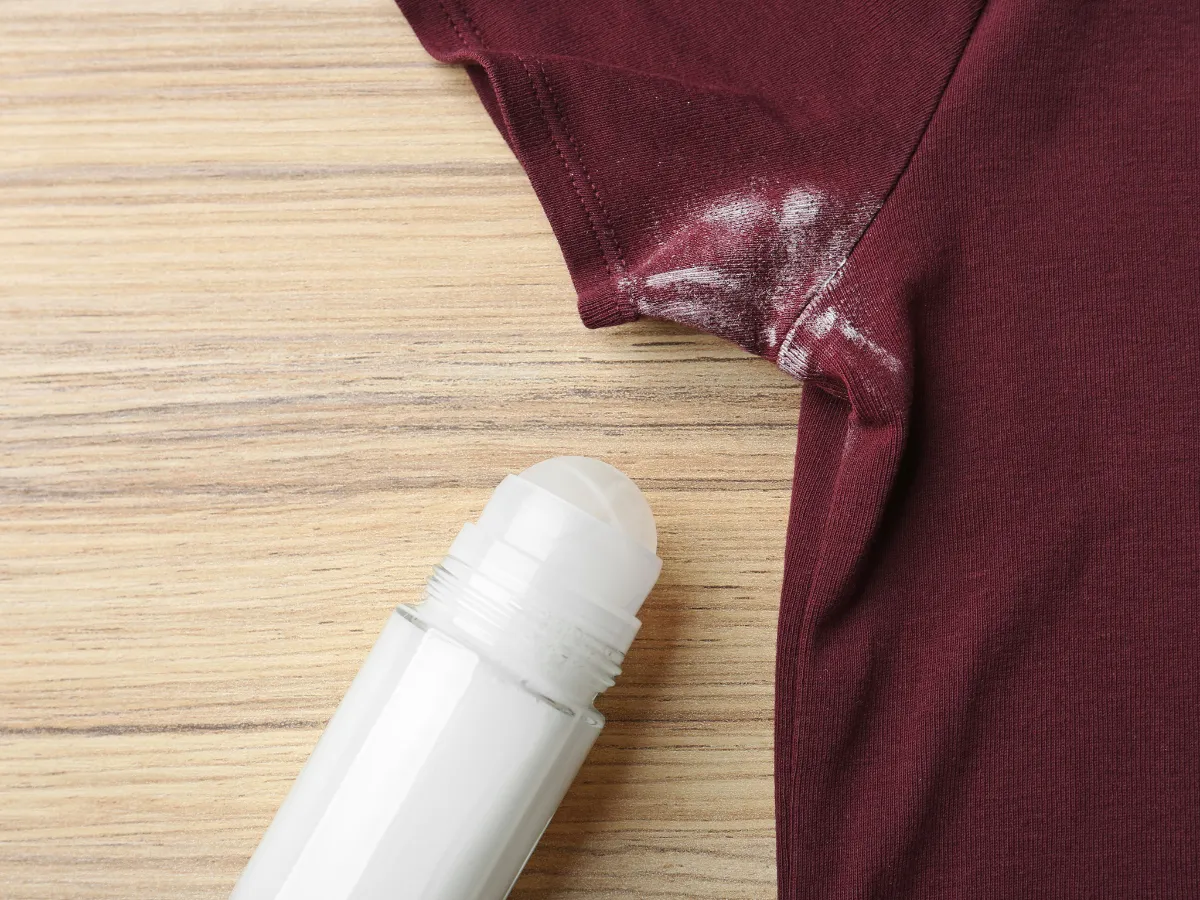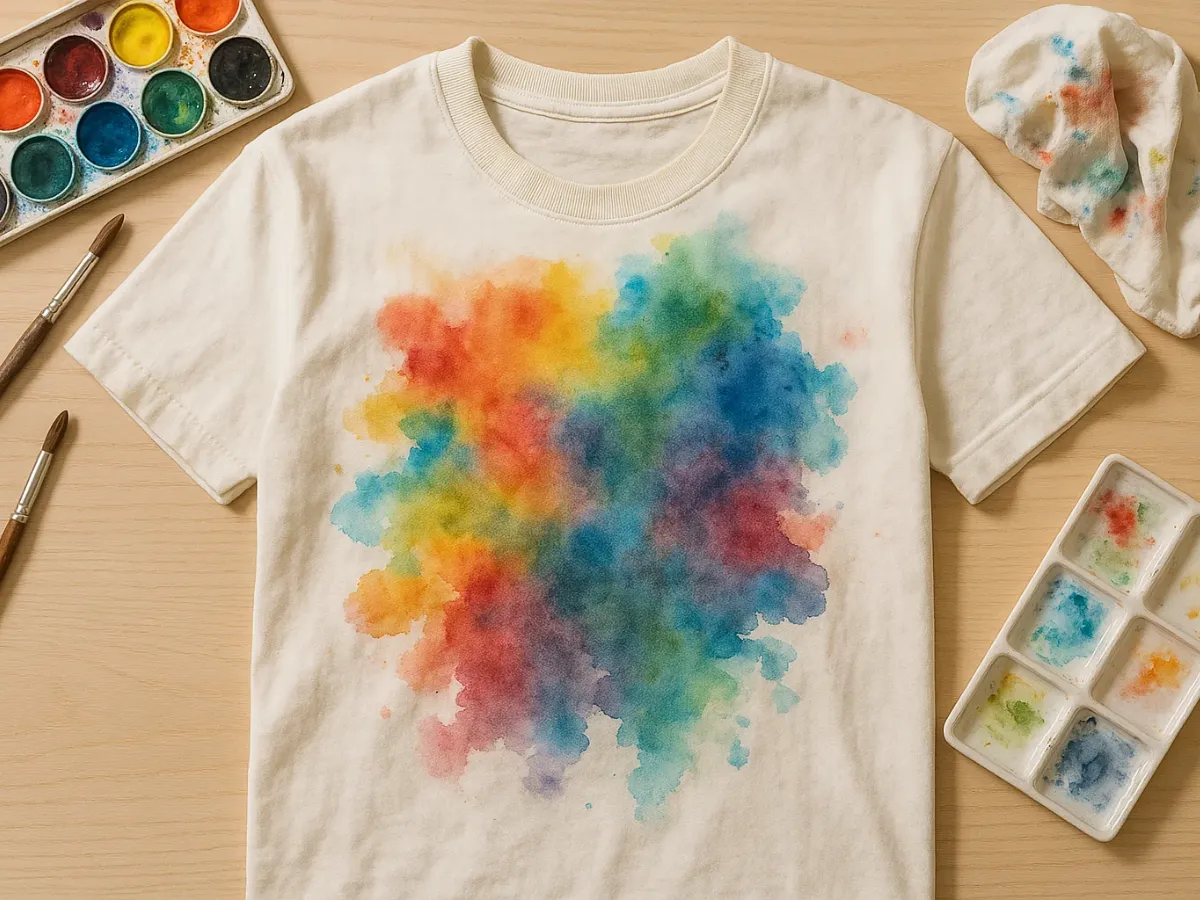Laundry SOS! How to Recover Color-Bled Clothes (Whites and Colors)

That moment of panic when taking clothes out of the washing machine and discovering your favorite white shirt now has pink stains, or that your jeans have left a bluish trail on other items... Accidents involving color bleeding in clothes are a laundry classic! A forgotten red sock, a new garment shedding dye, or simply mixing colors without caution can ruin an entire load. But does this mean the accidentally dyed clothes are lost forever? Not necessarily!
Several methods exist, both homemade and commercial, to try and reverse the disaster and recover your clothes affected by color bleeding. In this comprehensive guide, we'll explain why these accidents happen, how to prevent them, and, most importantly, what steps to follow to try and remove those unwanted color stains.
Why Does Color Bleeding Happen? The Causes
Color transfer during washing occurs when the dyes of one garment are not well fixed and release into the water, depositing onto other clothes. The most common causes are:
- New Garments (Especially Intense Colors): New red, black, navy blue, fuchsia clothes... tend to release a lot of dye in the first few washes.
- Hot Water: Heat opens the fabric fibers, facilitating dye release.
- Prone Fabrics: Some natural fibers like cotton retain dyes less effectively than synthetics.
- Poor Quality Dye or Dyeing Process.
- Mixing Light and Dark/Intense Colors: The most obvious cause.
Prevention! How to Avoid Future Color Bleeding Disasters
Before needing a rescue, the best strategy is prevention:
- SORT YOUR CLOTHES!: It's the golden rule. Always wash whites with whites, lights with lights, and darks with darks. Learn how to wash white clothes and how to wash dark clothes correctly.
- Wash New Items Separately: For the first 2-3 washes, wash new, intensely colored clothes alone or with very similar items to see if they bleed.
- Use COLD Water: Especially for colored and dark clothes. Cold water helps keep dyes set.
- Homemade Color Fixatives (First Wash): You can add half a cup of salt or one cup of white vinegar to the first wash of new colored items to help seal the dye (no guarantees, but it can help).
- Color Catcher Sheets: These are sheets you put in the washer that absorb loose dyes in the water, preventing them from depositing on other clothes. Very useful if you have to mix light colors with some darks or if you're unsure about a garment.
- Read Labels: Some garments indicate "wash separately" or "color may bleed." Pay attention. Check our guide to washing labels.
Disaster Detected! Immediate Action (Clothes Still Wet)
If you notice the color bleed right after taking the clothes out of the washer, don't let them dry!
- Separate Immediately: Remove the "culprit" garment that bled.
- Do Not Dry the Affected Clothes: Crucial! The heat from the dryer or iron will set the transferred dye, making it nearly impossible to remove.
- Rewash (Only the Bled Clothes): IMMEDIATELY put the accidentally dyed garment(s) back into the washing machine, this time ALONE.
- Use Detergent and Cold/Warm Water: Add your usual detergent and select a normal cycle with cold or warm water (according to the affected garment's label).
- Check Before Drying: When finished, check if the unwanted color has disappeared or significantly diminished. If it's gone, great! You can dry the garment (preferably air-dry). If not, you'll need more specific methods.
This simple immediate rewash is often enough to remove mild or recent color bleeding.
Methods to Recover Color-Bled Clothes (When Rewashing Isn't Enough)
If the color bleeding persists or you discovered the problem after the clothes were already dry, you'll need to try other solutions.
1. Commercial Color Run Removers: The Specific Option
There are products on the market specifically designed to remove color transfer. They are the most reliable option, especially for colored clothing.
- Types: They come for hand washing (packets to dissolve in water) and for the washing machine (added to the drum). Some well-known brands include Carbona Color Run Remover, Rit Color Remover, etc.
- Read the Product Label: Crucial! Ensure the product is suitable for your garment's fabric type (some aren't for wool or silk) and whether it's for white or colored clothes.
- Follow Instructions Exactly: Each product has its application method (soaking, machine wash...), recommended temperature, and action time. Following them is vital for effectiveness and avoiding damage.
- Ventilation: Some may have strong odors; use them in a well-ventilated area.
- Pre-Test (Recommended): Although designed not to cause damage, if the garment is delicate or a very bright color, testing on a hidden area is always a good idea.
These products are often very effective, even on slightly dried color bleeds.

2. Sodium Percarbonate (Oxygen Bleach): Ideal for Whites
If the color-bled garment is white (or very light-colored and durable, test first!), sodium percarbonate is an excellent ally.
- How it Works: It releases active oxygen in hot water, which breaks down the transferred dye molecules without using chlorine.
- Soaking Method (Most Effective): Dissolve 2-4 tablespoons of sodium percarbonate per liter (or quart) of the hottest water the garment label allows (minimum 40°C/104°F, ideal 60°C/140°F for white cotton). Submerge the bled garment and let it soak for several hours (4-8h or overnight).
- In the Washing Machine: Add 2-3 tablespoons to the drum along with your detergent and wash on a hot cycle (always according to the label).
- Result: Usually removes color bleeds on white very well, leaving the garment bright. Learn how to restore whiteness to clothes.
- Caution: Do not use on wool, silk, or dark/vibrant colors without a very reliable test.
3. Home Remedies (Variable Effectiveness, Use with Caution)
These methods are popular, but their success is less predictable than specific products.
- White Vinegar: Soak the bled garment in cold water with 1-2 cups of white vinegar for several hours. It can help release weak loose dyes and removes residue, but it's not a potent color run remover.
- Cold Milk: Completely submerge the garment in cold milk for several hours (changing it if it gets heavily dyed). It's a traditional gentle method, perhaps useful for very mild bleeds on delicate items.
- Bay Leaves and Baking Soda: Boil bay leaves in water, remove from heat, add baking soda, and soak the garment in the warm infusion. It's a folk remedy whose scientific basis is less clear, but some users report success.
- Raw Potatoes with Skin: Boil the garment (only if very durable and white!) along with several unpeeled potatoes. The starch is supposed to help absorb the dye. An old and impractical method.
Conclusion on Home Remedies: They might be worth trying for mild cases or if you have no other option, but for significant color bleeding, commercial products or sodium percarbonate (for whites) are more reliable.
Warning! What NOT to Do with Color-Bled Clothes
- Dry with Heat: The fatal error! The dryer or iron will set the transferred dye.
- Use Chlorine Bleach (in most cases): Although tempting for white clothes, bleach can react with some transferred dyes and worsen the stain or damage the fabric. Oxygen bleach (sodium percarbonate) is safer for removing color bleeds on whites. Never use bleach on colored clothing!
- Scrub Aggressively: Can damage fibers and usually doesn't remove set-in dye.
- Mix with More Clothes: Always wash the affected garment alone when trying to remove the color bleed.
Additionally, if the original garment that bled continues to release color, treat it separately. Learn how to wash dark clothes to minimize problems.
Frequently Asked Questions about Color Bleeding
How can I remove color bleeding from clothes?
Act fast (don't dry). Rewash alone in cold water. If it persists, use a commercial color run remover or sodium percarbonate (for whites).
How do I stop clothes from bleeding color?
Wash new items separately, use cold water, add salt/vinegar to the first wash, use color catcher sheets.
How can I remove color bleeding stains with vinegar?
Soak in cold water with 1-2 cups of white vinegar for several hours. Limited effectiveness for strong bleeds.
How do I remove stains from colored clothing that was dyed by another color?
Difficult. Don't dry. Rewash alone in cold water. Use a commercial color run remover specifically FOR COLOR (test first).
A color bleeding accident can be annoying, but it's not always the end for your clothes. By acting quickly, avoiding heat, and using the right products (commercial or sodium percarbonate for whites), you have a good chance of rescuing your garments. And always remember the importance of sorting clothes by color to prevent future mishaps!
Need to Wash Separate Loads? LaColada is the Solution!
The best way to prevent color bleeding is to wash whites, lights, and darks separately. If you lack the time or washing machine capacity at home to do so many loads, come to LaColada Self-Service Laundry Ponferrada! With our multiple machines of different sizes, you can wash several loads of different colors simultaneously, saving time and ensuring each type of clothing gets the right treatment. Simplify color sorting with us!
Wash by Color Easily at LaColada!
Sebastián R.
More than 10 years at the helm of Lacolada Lavanderia Autoserivico Ponferrada and repairing industrial and domestic machinery in my spare time. You won't find unverified theories from the internet here, just real solutions tested by someone who gets their hands dirty every day.
More Laundry Tips

How to Remove Deodorant Stains (White and Yellow)
Effectively eliminate unsightly deodorant marks.

Watercolor Stains on Clothes: How to Remove Them Easily
Step-by-step guide to removing water-based paint stains.

How to Wash White Clothes in the Washing Machine Correctly
Keep your whites pristine with the right programs and products.